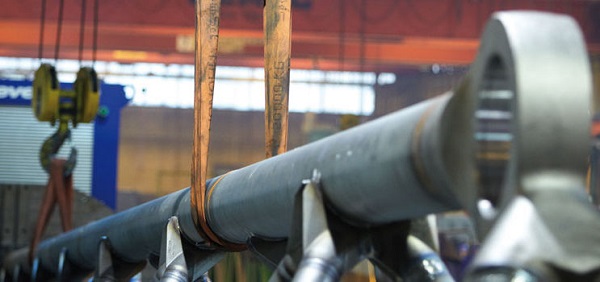Lifting sling
Contents |
[edit] Introduction
A lifting sling is used with a lifting device or crane to lift objects effectively and safely. Slings usually consist of cable, chain, rope or webbing, and generally include metal devices such as hooks, shackles, links or rings. Different types of sling are appropriate for different applications, depending on their composition, working load, length, slinging mode and so on.
[edit] Types of sling
[edit] Nylon
Nylon slings are strong, dense and flexible; they will stretch by approximately 6-8% of their length. However, nylon can absorb liquid, which can affect its strenght.
[edit] Polyester
Polyester slings are are known as 'web slings' or 'rigging slings' because of their synthetic, web-like composition. Polyester differs from nylon in that its stretch is approximately 3%, and it is safe for use where bleaching agents or acids are present.
[edit] Wire rope
Wire ropes are categorised based on the number of wires in a strand and how many strands are wrapped around the core. The more wires there are, the greater the flexibility and resistance to kinks, but also the more liable they are to abrasion wear.
[edit] Chain
Chain slings are typically suited to more demanding lifting operations. They are usually constructed from Grade 80 or 100 high strength alloy steel and can be designed and fitted to create custom sling assemblies for almost any kind of lift.
Chain slings should be stored in a dry and clean area to avoid damage, rust and corrosion. They should be regularly inspected for defects, including:
- Wear and stretching.
- Bent or twisted links.
- Ineffective safety catches.
- Cuts and nicks.
- Gouges.
- Heat discolouration and welding splatter.
[edit] Related articles on Designing Buildings Wiki
Featured articles and news
A change to adoptive architecture
Effects of global weather warming on architectural detailing, material choice and human interaction.
How big is the problem and what can we do to mitigate the effects?
Overheating guidance and tools for building designers
A number of cool guides to help with the heat.
The UK's Modern Industrial Strategy: A 10 year plan
Previous consultation criticism, current key elements and general support with some persisting reservations.
Building Safety Regulator reforms
New roles, new staff and a new fast track service pave the way for a single construction regulator.
Architectural Technologist CPDs and Communications
CIAT CPD… and how you can do it!
Cooling centres and cool spaces
Managing extreme heat in cities by directing the public to places for heat stress relief and water sources.
Winter gardens: A brief history and warm variations
Extending the season with glass in different forms and terms.
Restoring Great Yarmouth's Winter Gardens
Transforming one of the least sustainable constructions imaginable.
Construction Skills Mission Board launch sector drive
Newly formed government and industry collaboration set strategy for recruiting an additional 100,000 construction workers a year.
New Architects Code comes into effect in September 2025
ARB Architects Code of Conduct and Practice available with ongoing consultation regarding guidance.
Welsh Skills Body (Medr) launches ambitious plan
The new skills body brings together funding and regulation of tertiary education and research for the devolved nation.
Paul Gandy FCIOB announced as next CIOB President
Former Tilbury Douglas CEO takes helm.
UK Infrastructure: A 10 Year Strategy. In brief with reactions
With the National Infrastructure and Service Transformation Authority (NISTA).
Ebenezer Howard: inventor of the garden city. Book review.
Airtightness Topic Guide BSRIA TG 27/2025
Explaining the basics of airtightness, what it is, why it's important, when it's required and how it's carried out.






















